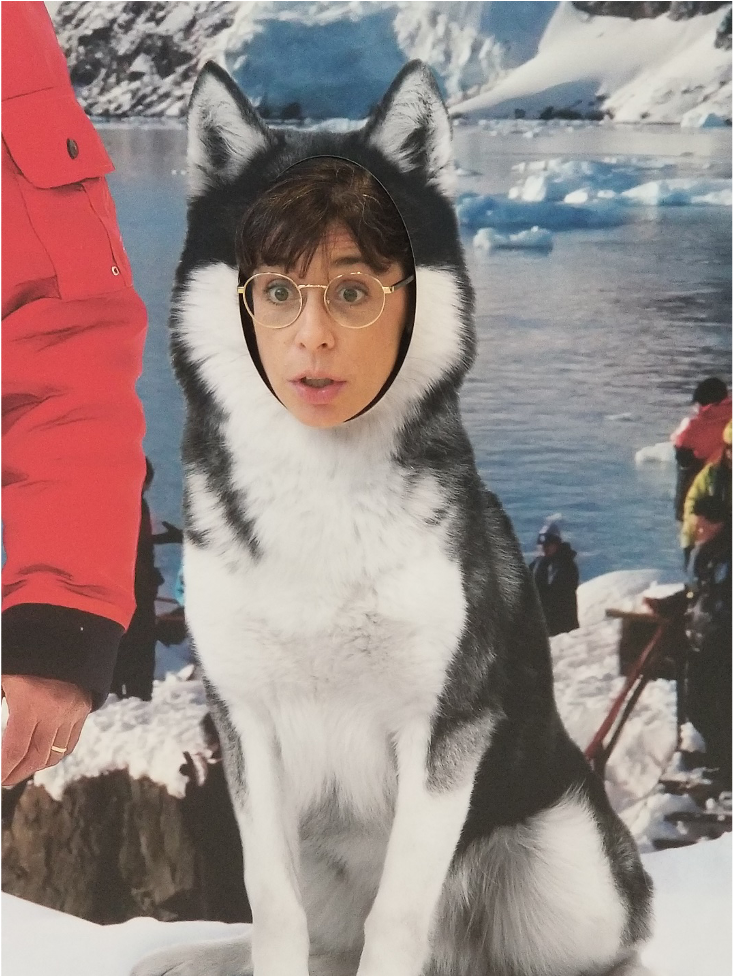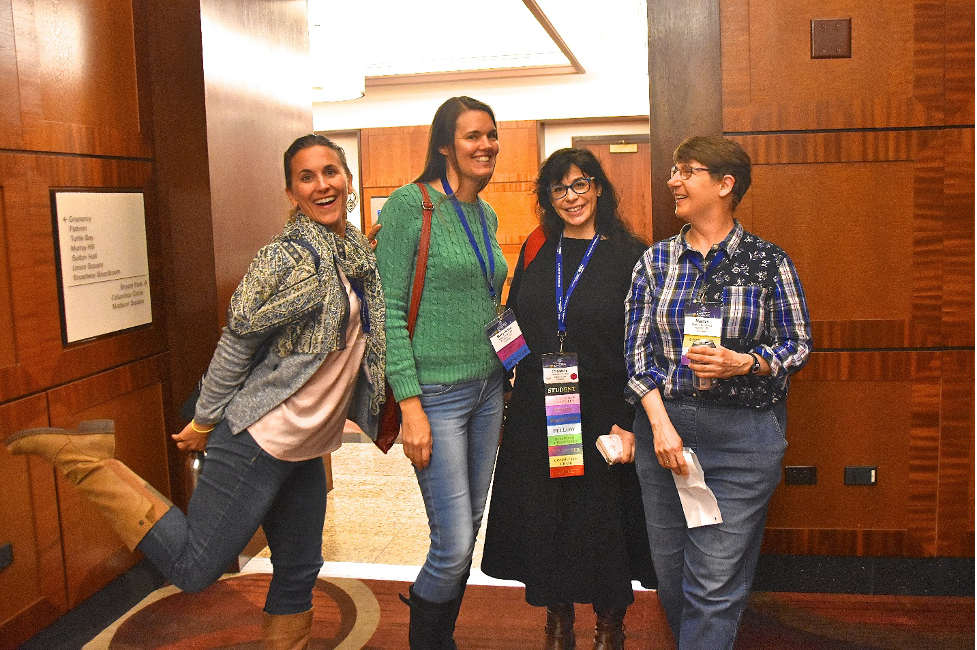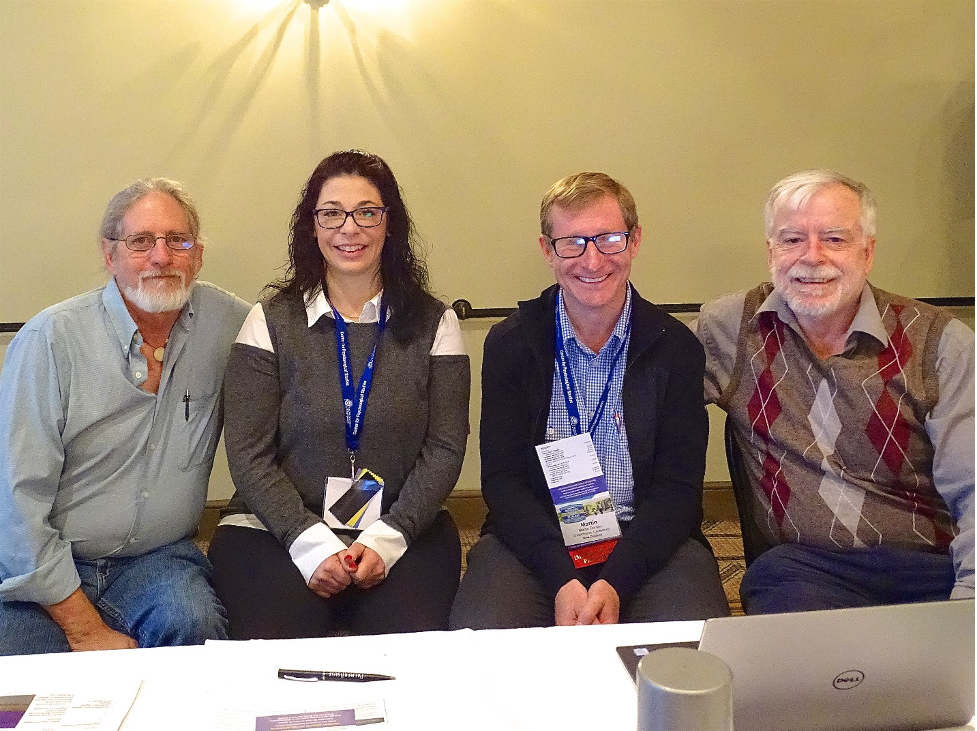Photos by Warwick Middleton
This month’s volunteer spotlight features our outgoing Immediate Past-President, Christine Forner. Christine joined ISSTD in 2006 and has been on the Board since 2010. She has just been re-elected to the Board, continuing on her volunteer work for us.

Tell us about your educational and professional background, and where you live and how you landed there:
I have been part of the “business” since I was 16, working on a teen helpline. Many of the calls were quite serious. I remember dealing with several suicide calls. I seemed to be able to stay calm and take these situations quite well.
As I have a writing disability, my grades were not that great. I applied to many post-secondary institutions for social work, but I was never considered. Ultimately, I went to a small college where I earned a Diploma in Social Services.
My first practicum was at a sexual assault center, in public education. I did not want this job, but because of my not-so-great grades, I had one of the last choices. However, it turned out that I was well suited for this position and enjoyed the public speaking aspect. Once I acclimatized to the sexual assault content, I did well.
After graduating, it became apparent that no one was hiring people with only diplomas, so I started taking unclassified classes (meaning I was able to take classes, but not full time and they could not be part of a specific degree, so mostly options) at the University. My grades were still not good enough to get into University, and I had trouble passing Math. It took me five tries to finally pass: some may say they are bad at Math, I say I am tenacious!
As I was attempting to pass my Math course, I had whittled away at several university classes. In the early 90’s, many of the Women’s Studies classes were offered for unclassified. By the time that I had completed Math, I had completed about 3/4 of a Women’s Studies degree. As I still was not accepted into a Bachelor of Social Work Degree, I completed my BA in Women’s Studies, and to this day it was the best part of my educational experience. I learned so many things that still greatly influence me today.
After completing this degree, I was hired at a shelter for individuals fleeing Domestic Violence. It was, at the time the only shelter that took both women and men who were escaping domestic violence. I worked there from 1995-1998.
I had my first child in 1997. I really wanted to be a therapist, but I was having a hard time separating my maternal instincts from the children that were coming into the shelter. I started applying for a position that I really had no business applying for, and there was no way that someone would be able to have the career path I now have – but I was bold in my belief that I would be an excellent therapist. I started to apply to a lot of agencies, and, finally, I found an agency that suited me, so I started to call them on a fairly regular basis to see if they had a position. They finally brought me in for an interview and we got along very well.
This was an unusual organization. The Calgary Women’s Health Collective was a non-government funded agency whose mandate was to offer counselling to women at very affordable rates. I think this is partly why I was offered the position as I did not mind making the little money they offered, and I appreciated the flexibility of making my own hours. I was a mother first and foremost, and still am today, so I did not want to work full time. It was also a very feminist organization, where there was no time limit on how long you could see someone. Unbeknownst to me, this was also the perfect setting for complex trauma survivors.
My very first client had DID.
Noting that I had not been through academia, so I had not been told what is “right” and what is “wrong”. I took what the client told me and found it fascinating. She was a very aware multiple. I approached my mentor and explained, and she handed me Colin Ross’s 1980’s book entitled Multiple Personality Disorder. I read that book like it was a novel. I absorbed what Colin was saying, and it all seemed to make perfect sense to me. My clinical work has always been with very traumatized people.
Flash forward a few years, I then had three children, and I started to realize that there was something very wrong within my marriage. I felt I would eventually need to get a Master’s degree, and earn a wage that could support me and my children. I still did not know that I had a writing disability at this time. But, because I had one Bachelor’s degree, it was easier to get into a second Bachelor’s degree, so finally, I was accepted into the Bachelor of Social Work program at the University of Calgary. Funnily enough, I graduated with Honors, and made it into the Master of Social Work program.

This is where the challenges started to come. I was told time and again to not study anything that had to do with DID, but I also had started to make contact with people at the ISSTD – Martin Dorahy was one of the first people with whom I had spoken. I was also fascinated with guided meditations, and wanted to see how meditation and dissociation worked together. I completed a full dissertation that was the equivalent to a PhD dissertation on Guided Meditation for individuals with DID.
I also started to put in applications to speak at conferences and was accepted to ESTD’s first conference in Amsterdam in 2008. I have been hooked ever since! My first ISSTD conference was in Chicago in 2008 and I have not missed one since.
I live in Calgary, Alberta, Canada. There are only three of us in Calgary who specialize in this field as two leading professionals have retired. I have been in my own private practice since 2011. I have done a lot of clinical supervision now and have several practitioners work with me. I occasionally will take on a student.
What is something about yourself that most people don’t know?
I like to do Ironman racing! They are hard and taxing. An Ironman race is a 3.8 km swim, followed by a 180km bike ride, and then a 42.2 marathon. I did one in 2015 and it took me 15:26:13 to complete.
What has been the most challenging experience of your career?
It was actually recent, and really bothers me. I started to work with a young man, whom I diagnosed with OSDD. He was bright and so very traumatized, but what traumatized him was quite a mystery. He had been through the typical mental health avenues, where he was repeatedly told that he should be better than he was and that psychopharmaceuticals were his best option. He fully believed that his getting better should happen instantly or he was broken beyond all repair. He left therapy very early on because I could not fix him fast enough. This breaks my heart because I know he is not the only one being told this. He had so much room to grow and heal, but not under the manualized, ten-sessions-or-less way of thinking.
What has been the best experience?
I have another client who was part of a horrible child pornography ring and had nothing but horrible relationships. After five years of really hard effort and dedication to himself, he is in one of the healthiest relationships I have ever observed. He deserves this so much.

How did you first get involved with ISSTD?
I went to a conference in Chicago, had a look around, and by the next year, I saw a huge gap. There were very few people who were my age. Even now, if you look at the demographics, you will see a large group who are 60 and above and a large group who are 45 and below. There are not that many who are between the ages of 50-60. These are the years that the False Memory Syndrome Foundation attempted to annihilate the field. I started to bug Paul Dell (ISSTD President at the time) to ask if there was anything I could do to help, and the rest, as they say, is history. I felt the organization was heading to an abrupt ending if we did not focus our wisdom and attention on the newer professionals and students. We had to bring life back into the organization with fun, lightness, humor, beers, and pizza for our cash strapped students.
You have done so much for so many! What are some of the activities you have been involved in or the roles you have had in ISSTD?
Here’s a list!
- I started the Student and Emerging Professional Committee in 2009.
- I started the social programs during the conferences. This includes the SEP lunches. But I also started the social outings such as the Haunted Pub tour 2013, the Haunted Houses of 2014, the trip to Universal in Orlando in 2015.
- I created the Dissociation 101 course in 2011 (which has been greatly helped in recent years with the contributions of Mary Anne Kate).
- I am the only original member of the Conference Committee that was established in 2011.
- I was invited onto the Board in 2010 and invited to be Treasurer in 2012.
- I was elected in a treasure in 2015.
- I was elected as president-elect in 2018 and served as President in 2019.
I am the first, as far as I know, Indigenous leader of the ISSTD. I was part of every major decision for the last 10 years, and these were not easy years. We were faced with financial ruin constantly. We are no longer in this place. ISSTD is truly in a period of growth.
You have absolutely left ISSTD better than you found it. What are some of the biggest changes you have seen in ISSTD while you were on the Board of Directors?
There are two big things, I think. Going from an organization that was managed by an organization to now being an independent organization was huge for us, and this included teaching the Board how to function from a financially responsible position. Moving our conference from the fall to spring was a big deal. Adding the social aspect to our conferences has been critical in a way we didn’t expect, and even better than I imagined.
I have seen an organization that was traumatized and battle-worn. This has always been the hardest working group of people I have ever met: this is a constant. The members of the Board are extremely dedicated and have pulled us through so many issues that could have folded us under several times over. But love, care, and non-offending righteousness about human dignity is also a common thing, it gives me hope. The Board of the ISSTD, the committees, and the members always give me hope.

However, we do work in some very dark areas and there are some who have a vested interest in our demise. The memory wars took its toll, but I have also seen so much human beauty and dedication. The hearts and minds of so many of the people I have met inspire me. We are such a strong and resilient group of people.
Science is on our side, and so is the human condition of profound care and concern. This is something that is abundant within ISSTD: beautiful people who are not just able, but willing to work with and advocate for those who have been so very harmed by others.
I just wish the powers that be could see the world from our view. This is a sentiment that is obvious within the Board, that what we have learned and have to offer is slowly gaining more and more understanding and acceptance in the world. Human to human harm is not a natural state for human beings. Safety, security, and dignity is our basic standard of care, and we know that many people did not get this standard of care. Our mission and vision statements are part of trying to change this.
What do you hope for the future of ISSTD?
I hope we have membership in the tens of thousands. I hope we produce several number one best selling books. I hope our educational offerings are part of all post-secondary education institutions that deal with mental health. I hope we have huge external funding to support research. I hope that some of our members become involved in influencing policy changes. I hope our knowledge becomes standard practices and ingrained systemic knowledge, which in turn takes a huge bite out of misogyny/patriarchy, racism, and child abuse and neglect.

